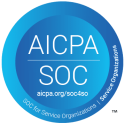“The situation doesn’t have us, we have it. We can be the creators and choosers of our responses.”
— Vinay Kumar, Leadership Consultant
“Because of this inner work, I’m able to connect to a greater purpose and vision.”
— Allen Gavilan, VP Worker’s Compensation Solutions
When Farragut’s co-founder Shail Jain received feedback from his leadership coach and friend Vinay Kumar [1], he got a shock. “Controlling, afraid of failure, rejection, and even success”, Shail wasn’t the leader he thought he was. Since that day in March 2018, Farragut has been on a leadership journey.
“This is hard work, and this is courageous work,” said Vinay, “but if change doesn’t start at the top, it will fail.” Some leaders believe that everyone else has to change, but with Vinay’s help, Shail did the inner work necessary to grow, then led by example—modeling the change he wanted to see.
“Is Shail perfect? Has Farragut completely shifted?” Vinay asked. “Gosh, we’re all works in progress, right?” Growth happens slowly. People and organizations always shift back and forth in the midst of change, but Vinay adds: “We’re moving in a good direction.”
The ELT and Courageous Conversations
A big part of that movement has taken place because of Farragut’s Extended Leadership Team (ELT). The ELT is co-lead by Vinay and Allen Gavilan, VP of Worker’s Compensation Solutions at Farragut.
In every organization, giving constructive feedback and improving systems is integral to success. However, if done poorly, these conversations trigger egos and can make people less receptive to the message and improve. To overcome this, the ELT has focused on developing skills to engage staff in “courageous conversations.”
Allen narrates a situation in which a particular supervisor (call him Mr. Smith) and his team were consistently underperforming. In the past, Allen would be judgmental, angry, or even let some of the problems slide in order to avoid a confrontation.
“But the tools I’ve been practicing in the ELT,” he said, “have helped me understand how I’m contributing to the problem.” One of these tools is to become aware of your body’s reactions. Allen met with Smith to discuss his team’s performance. But when Smith didn’t get the message, Allen’s ears were burning, his jaw was clenching. His work with the ELT helped him to recognize his reactions and then to take a step back, circle around, and “introduce pause.”
“I went through a process of understanding those feelings and looking at the drama that I was making up—the stories I was telling myself.” He then asked himself: “How am I contributing to this? Have I made it clear to Smith what I am really looking for and what improvement looks like? And if not, how would he figure it out? Maybe I need to show him and to teach him verses just banging my head expecting it to happen.”
So rather than reacting impulsively when someone triggers us—and dropping into what Bob Anderson calls the “Reactive Mode”—Allen takes a step back. “What Allen’s describing is self-awareness,” Vinay said. “First, there’s the body’s reactions and emotions and, second, the stories that our minds habitually make up. When we develop awareness, the situation doesn’t have us, we have it. Now we can be the creators and choosers of our responses, rather than just react.”
The ELT creates a safe space for Farragut’s leaders to practice courageous conversations, but also to plan them carefully.
So, when Allen talked with Smith a few days later, he didn’t accuse, he began with his own story. In fact, he began with “I.” “This is what I saw, and this is what I heard, and this is the story I told myself: I said to myself: ‘Why isn’t Smith getting this?’ And when I tell myself that story, I feel frustrated and I just want to avoid the whole thing.”
To top it off, Allen follows with the humility to solicit Smith’s perspective. “I asked him: ‘What are you hearing? How is this landing?’” In this way, Allen communicates his own experience authentically but does so in a way that doesn’t trigger Smith’s ego, so he can hear Allen’s message and they can engage in a meaningful, productive conversation.
Thus, rather than walking away frustrated or imposing a counterproductive reprimand, Allen is building relationships that will serve both parties, promote employee engagement, and benefit the organization as a whole.
The results are clear: “After that conversation, Smith took actions with himself and his team,” Allen said, “and we saw a marked improvement in our weekly key performance indicators.”
Taking courageous conversations to the customer
This inner work benefits staff at all levels of the organization. “I can’t think of anything that it doesn’t impact,” Vinay said.
Indeed, courageous conversations are perhaps most courageous when bringing them to the customer, because, as we know, the customer is “always right.”
Some of the products Farragut introduces to its customers can be transformational. And even if a change is what they want, it can often trigger “reactivity” in customers. “For months we were in some drama with one group of key stakeholders,” Allen remembers. “It was a very charged climate.”
One ELT member, Stephanie Gavilan-O’Neal, Implementation Consultant at Farragut, went for a site visit to meet with the top executive team. According to Allen, “Stephanie did some real inner work to prepare. And as a result, they were able to establish connection and trust, and work their way through key roadblocks. Judging by their subsequent interactions with Shail, they had moved to a much better place as a result of Stephanie’s courageous conversations.”
The high-performance work of the ELT amounts to more than just problem-solving. As Allen explains, “because of this inner work, I’m able to connect to a greater purpose and vision.”
Thus, rather than reacting to problems and threats with fear, Farragut’s leaders now take action based on vision and passion to create and thrive. The results of this shift speak for themselves. In 2018, after years of being stuck in an oscillation pattern, Farragut’s revenue finally surpassed the $7 million mark. In 2019, it broke $8 million. And the company’s leaders anticipate breaking $9 million this year.
Ironically, it is inner work that moves ELT members to achieve such substantial results in the outer world. Vinay reflected: “As the saying goes, ‘All things change when we do.[2]’” Commitment to inner work helps us create highly effective relationships that produce results on the personal level, at the company level, and ultimately at the customer level.
[1] Vinay is certified by Bob Anderson’s Leadership Circle. This organization provides the model for the leadership development taking place at Farragut.
[2] This saying is attributed to the 9th century Japanese philosopher and Buddhist Monk known as Kukai.





